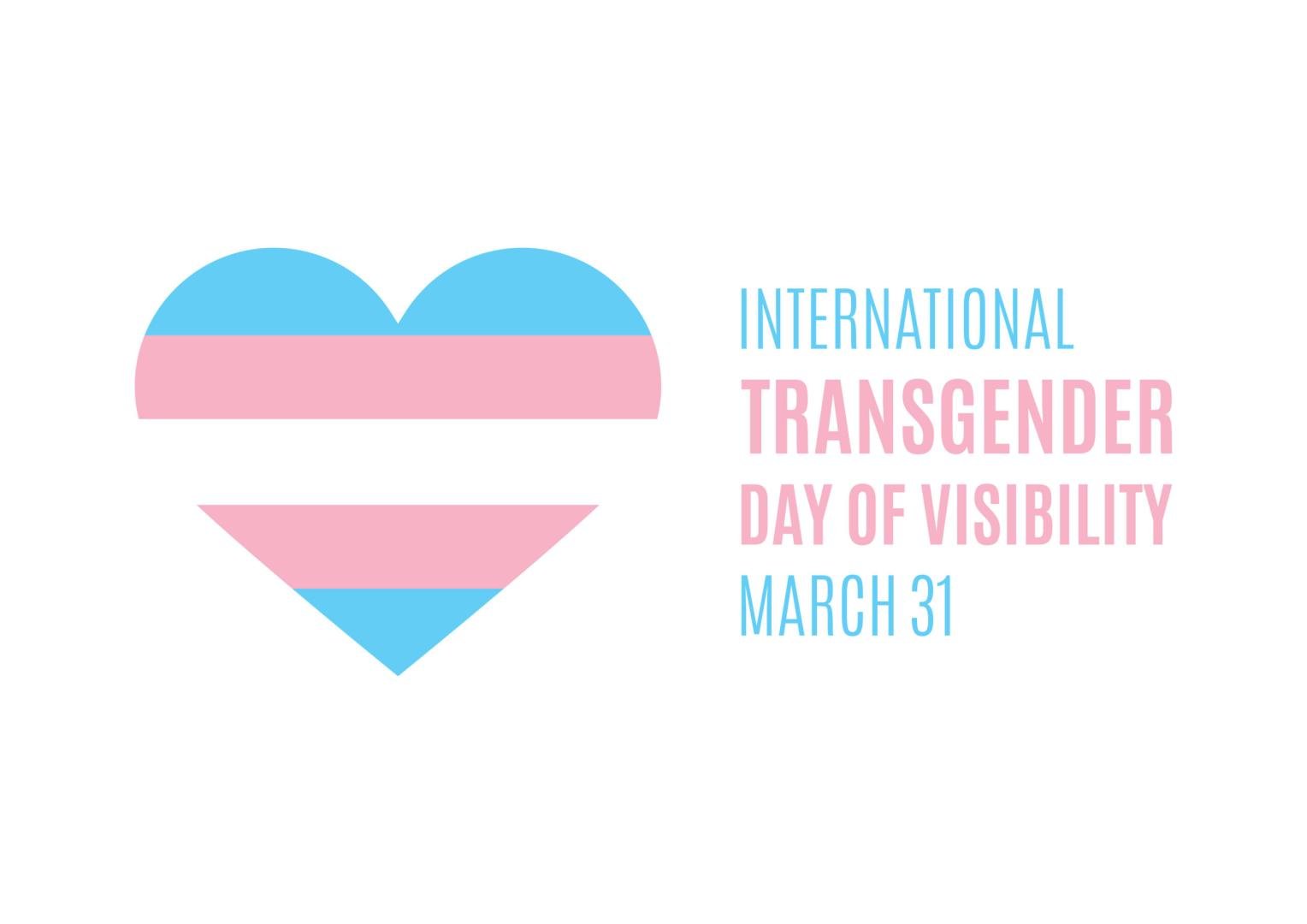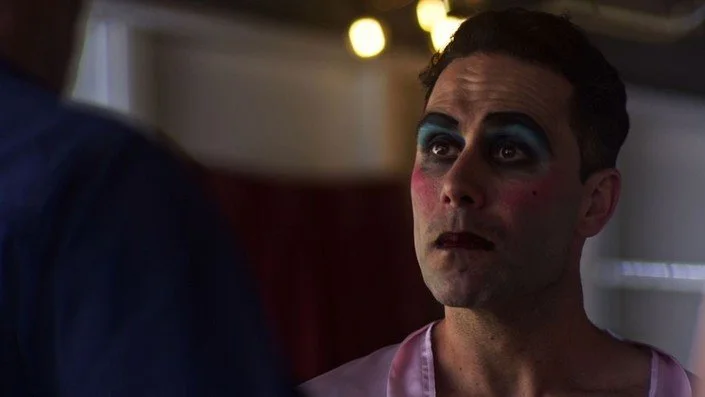Transgender Day of Visibility 2025 – Alice Maio Mackay Double Feature: I can fucking feel you, demon
by J †Johnson, Staff Writer
What Am I Really Afraid of, a Fucking Worm? T-Blockers
What if we are who our best friends see in us? What if we aren’t what people who don’t love us try to make us into? And as Spencer (Lewi Dawson) puts it in Alice Maio Mackay’s 2023 film T-Blockers: How’s a shitty movie gonna warn anybody about anything?
We have more questions. That’s what the movies we need most do for us. They challenge and comfort us, and they give us better questions. Does the movie look out for us? Does it watch us back? Maybe it’s that T-Blockers and Satranic Panic are so recent, or that Mackay is fearless and young, or brave enough not to be afraid of what scares her—maybe that’s why these films feel like a whisper in the ear, a look in the eye, an understanding friend. We’ll have to watch again and again to find out if they’re speaking through time, reminding us of what we need to survive, but they certainly speak to us now.
We need to see people give up, and we need to see their best friends bring them back to themselves: Fuck it all, we always get by. That’s Spencer again.
We need to know Sophie (Adeline Ophelia Last) exists, Sophie who makes B-movies to tell truths people won’t believe any way you tell it—so you might as well say it in a shitty movie. We need to hear Sophie tell an exploitative producer, Never fuck with queer filmmakers. We need to feel what Sophie feels when someone isn’t who they are. We need to see Sophie and Spencer and Storm (Lisa Fanto) and everyone they bring into their masked bigot bashers club, in all their glory. And we need to join that club, because it’s worm smashing time.
We also need a guide, a horror host in the filmic void, Cryptessa (Etcetera Etcetera) with her fabulous rubber-band mouth, bringing films back from nowhere or elsewhere, films that can help us save the world. Again.
There is no formula for making a movie people will want to watch over and over. And yet, some filmmakers have a knack for it. The second time we saw T-Blockers, and bathed again in its conspiratorial bisexual lighting, the promise of that first watch came through. Already we want to speak along with the film, absorb every line, quote it when we need its strength and humor. Some combination of set pieces, story, shot rhythm, cracking dialogue, color palette, and filmic texture prepare us for the eclectic charge of personality and camaraderie that makes us want to live with this movie. It’s a friendship film, a disaster film, an action movie, a fight film, a superhero movie, a film about shit jobs, a film about exploitation that isn’t an exploitation film but is proudly B in a way that challenges the hierarchy of that term. And it’s a vision of queer and trans people living in the world together, making pockets of de-shittification. It’s a reliable happy hour during a soul-crushing life that assures us, best friend style, that bigots win when we doubt ourselves, so we need to keep on smashing those worms, never let them into our heads. Listen to Cryptessa, the horror host laptop oracle: Who really is this us? And how do we know if we are them or the others? What if the accepted normal is the strange? The films we keep are the ones that help us find the questions we need. Not so we can answer them, but to remind us to seek better questions. That’s why we come back to necessary art, and that’s why we never stop looking out for it.
Realism Is for Russian Playwrights and Lonely Virgins: Satranic Panic
Any double feature is much improved by a road trip movie. And for a filmmaker so engaged with genre hybridity, it’s an ideal vehicle for the fantastic elements, along with the more mundane relationship dynamics. Again we have a buddy film queered by a third person, and again we have a platonic friendship that admits a complicated love interest. In T-Blockers, Sophie adds her new crush Kriss (Toshiro Glenn) to the group: a nice guy with a transphobic friend. Sophie’s friends tolerate him with reservations, and give Kriss a chance to prove himself, which he does (and not just in his excellent sartorial decision to rock a mirrored visor for their patrols). In Satranic Panic (2023), things get extra complicated with Aria’s (Cassie Hamilton) bratty crush, Nell (another turn from Lisa Fanto), and the dynamic is tighter, bound as it is by automobile. A key difference is that in T-Blockers, the third person opens the buddy pair up to a larger group dynamic, whereas three is the magic number in Satranic Panic. In both cases, we have a Scooby gang in the Buffy mode, albeit dragged up and queered.
The two films are connected by casting overlap, and by the allegory of demonic chasers. On the one claw we have transphobes as monsters, and on the other claw we have chasers who conflate attraction, repulsion, and self-hatred. The allegory is particularly satisfying as horror genre fare because monsters get to do what they do—chase people—while helping us think about transphobic obsession. This nuanced representation of the transphobic chaser puts Mackay’s film in conversation with contemporary novelists and genre-fuckers like Gretchen Felker-Martin (Manhunt, Cuckoo), Alison Rumfitt (Brainwyrms, Tell Me I’m Worthless), and Torrey Peters (Stag Dance and Detransition, Baby) at a time when we need help parsing threats to queer and trans autonomy.
T-Blockers and Satranic Panic also share the motif of the protagonist who can feel when people aren’t who they pretend to be—because they are actually brain worm hosts, demons, and anti-trans. As a double feature these films feel almost episodic, or like an anthology. Kind of like if John Carpenter was able to run with his concept for Halloween III as a way to make the franchise a more exploratory anthology series. This thematic repetition with a difference is part of Mackay’s promise, as revealed in a long weekend of binging her films (highly recommended).
Another connection between these two films is drag. In T-Blockers, we have Cryptessa the horror host oracle dragging up her movie intros and providing a voiceover for the narrative while reading the cultural context. Satranic Panic features a trans drag performer protagonist, Aria, and multiple characters in hilariously variable drag (some of which is a see-through costume for villainy). After a post-performance kiki turns punchy and fiery, Nell comments, First it was a drag queen, then it was a demon. What constitutes good and bad drag takes on layers with regard to people’s motivations as well as their sensibilities. In Satranic Panic, drag is more overtly thematized, with Aria spelling it out when she says, There is a difference between drag and trans—and sweetie, I think you know that. Script writers Mackay, Cassie Hamilton (who also acts and sings), and Ben Pahl Robinson are crafty (and self-aware) enough writers to follow that on-the-nose moment in the midst of Aria’s big monolog at the end of Satranic Panic with a shout from the peanut gallery: Hey, get back on track!
Another fine line here is that between musical theater and drag, and as someone with an allergy to the former and an unabashed love of the latter, we can confirm that Mackay and all ride it well. The cracks crackle, the stage performances are draggy, and the campy sensibility extends through even the most intimate moments between two characters in good lighting. That last feat is most impressive, and most indicative of Mackay’s talent. The effect is to present characters who are equally self-aware and willfully oblivious to anything outside the moment, while we all know they will face consequences (but won’t merely be punished for it). As an extension of that, we get a genuine sense of queer friendship, and how we can allow each other to be ourselves even when we suspect we might know better. We can’t live each others’ lives or make decisions for one other, even as we share the moment and appreciate how we feel it differently. That overlap of distinct, simultaneous experience is part of the texture of friendship, and we don’t need to be in perfect synch or agreement to enjoy the spark. Mackay and cinematographer Aaron Schuppan’s lighting underscores this, layering purples, pinks, and reds, and bathing characters in warm, yellow-orange daylight in intimate moments and moments of individual reflection. The lighting effects are comforting even when characters have dysphoric flashes.
Which brings us back to these twinges of feeling and knowing in both films. Sophie and Aria experience jolts of awareness Aria describes when her bestie Jay (Zarif) asks her how it feels: Feels like a shiver at first… then it kind of feels like dysphoria used to feel… tension, wrongness. However, she notes, that wrongness is outside, not inside. It’s a sudden awareness Aria and Sophie have of their surroundings, and of people who mean them harm. It’s a superpower, and they’ve learned to use it to fight demons and better love their friends.
Support MovieJawn Staff
–
Support MovieJawn Staff –
With the death of so much print media and meaningful journalism, it is important now more than ever to support the writers and outlets you love.
If you enjoyed this article, show your support by donating to our writer. All proceeds go directly to the writer. Recommended donation is $5.







